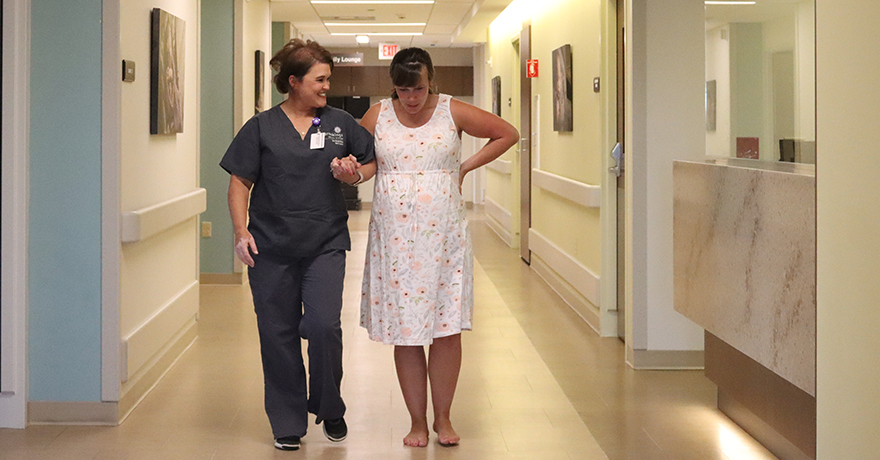Understanding & Respecting Physiology During Childbirth
- Winter 2023

Brookings Health’s obstetrics team uses physiological techniques developed by Spinning Babies to support mothers with a more comfortable pregnancy and easier birth. The techniques focus on balance, gravity and movement to promote natural birth physiology before force.
These physiological tools can benefit all women no matter their labor choice. The techniques help balance and open the mother’s pelvis and allow the baby to rotate and move naturally through the birth canal. The positions and movements are especially useful for women who want to experience an unmedicated or limited intervention vaginal delivery.
“Depending on what stage of labor mom and baby are at, our team will encourage mothers to position and move in different ways to engage their body’s natural power,” said Obstetrics Director Michelle Sand. “There are moves moms can use even before birth starting at 20 weeks to train for labor, get baby in the right position, and add to their comfort during the second half of pregnancy.”
Three of the most common moves used both before labor and during are referred to as the Three Balances. These positions – the forward-leaning inversion, the jiggle and the side-lying release – create equilibrium in the pelvis and surrounding structures. The moves also help the widest part of the baby’s head dip below the pelvis’ entrance, a fetal position called engagement.
As labor progresses, obstetrics nurses can recommend various movements, like lunges or squatting, to help the baby rotate and move through the pelvis. They also can suggest positions and movements to stimulate labor if it stalls.
“Our nurses are trained to locate the baby’s position and station in the pelvis,” said Sand. “Based on position and station, we can help with balancing activities as well as movements to promote fetal rotation and descent to keep labor progressing. We also have specialized equipment, like a peanut ball and birthing bar, to help moms get into different positions that keep labor progressing and promote vaginal birth.”
When it’s time to deliver the baby, standing, squatting with a birthing bar, kneeling on hands and knees, performing a kneeling lunge and lying on her side are all ways a mother can open her pelvis so the baby may come out.
In addition to keeping the labor process moving, the physiological moves mothers perform throughout labor and delivery can also reduce the need for interventions like Pitocin inductions, forceps or vacuum deliveries, episiotomies, and even cesarean sections. They also help prevent common birth complications for mothers such as perineal tearing or excessive bleeding.
Perhaps the biggest benefit of physiological birth techniques is their ability to empower mothers. Many women feel more connected to their bodies and confident in their abilities to take on motherhood after doing what their bodies are naturally designed to do.
Want to learn more about the obstetrics services available at Brookings Health System? Visit brookingshealth.org/OB.

